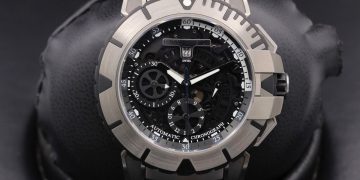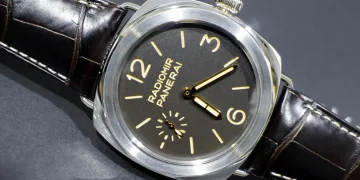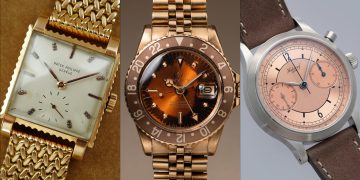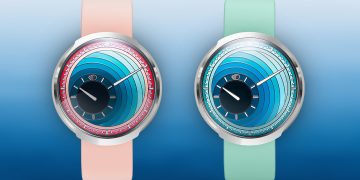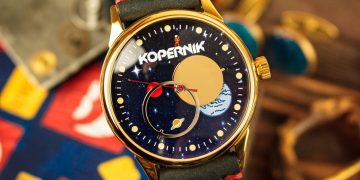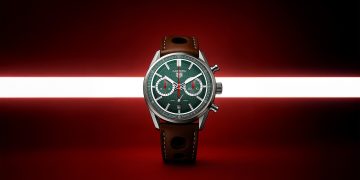Introduction: Understanding Perpetual Calendar Watches
A perpetual calendar watch is a horological masterpiece, a high-end timepiece that can automatically adjust for months with different days, leap years, and even the variations in the number of days in February. This functionality makes them highly complex and respected in the watchmaking world. Unlike regular date watches, which need to be manually adjusted for short months and leap years, a perpetual calendar continues to function without needing such corrections, often for decades.
These watches are the epitome of fine craftsmanship, combining precision mechanics with the challenge of keeping track of time in a world where the complexity of the calendar must be considered.
In this article, we will explore the users of perpetual calendar watches, their preferences, and how they view these timepieces in terms of both functionality and luxury. We will also look at how the perpetual calendar has evolved over time and what makes it such a desirable feature for collectors and enthusiasts. Lastly, we will evaluate these timepieces in terms of performance, accuracy, design, and value for money.
1. What is a Perpetual Calendar Watch?
To fully appreciate the users and evaluations of perpetual calendar watches, it is crucial to understand what they are and how they function. At its core, a perpetual calendar watch is designed to account for the variation in the length of months and leap years. Traditional date watches must be manually adjusted at the end of months with fewer than 31 days and again for leap years. However, perpetual calendars automatically adjust for all these factors without intervention for many years.
Key Features of a Perpetual Calendar:
- Date Display – The date is shown through a date window, adjusted according to the month’s days.
- Month and Day of the Week – A full calendar display that shows the day and the month, often via separate sub-dials.
- Leap Year Indicator – Perpetual calendar watches typically have a leap year indicator, which tracks the four-year leap cycle of the Gregorian calendar.
- Moonphase – While not always present, many perpetual calendar watches also include a moonphase complication to track the moon’s cycle.
In essence, perpetual calendar watches are an embodiment of mechanical sophistication. Watchmakers that craft these timepieces pride themselves on pushing the boundaries of craftsmanship, ensuring that each piece reflects an exceptional level of complexity and engineering.
2. Who are the Users of Perpetual Calendar Watches?
The user base for perpetual calendar watches is highly specialized, often consisting of collectors, enthusiasts, and individuals who appreciate the artistry and precision of fine timepieces. These watches are not for everyone — they are designed for people who understand and appreciate the mechanics of horology, or those who desire a sophisticated piece for its luxury, history, and precision.
Collectors and Enthusiasts:
- Luxury Watch Collectors: Collectors value perpetual calendar watches for their complicated mechanisms and high craftsmanship. Some collectors gravitate toward watches from prestigious brands like Patek Philippe, A. Lange & Söhne, and Vacheron Constantin because of the complexity of the movements and their exclusivity.
- Horological Enthusiasts: These are people who truly understand and appreciate the technical aspects of mechanical watches. They are often well-versed in complications, and the perpetual calendar is considered one of the most impressive complications to have on a watch.
- Affluent Individuals: Many wealthy individuals purchase perpetual calendar watches not just for the craftsmanship but as a symbol of status. These watches are expensive and luxurious, which makes them attractive to those seeking a high-end timepiece as a reflection of success and sophistication.
Business Executives and Professionals:
Business professionals and executives often choose perpetual calendars for their elegance and timeless nature. These watches are reliable, functional, and can serve as an important status symbol. The practicality of a perpetual calendar allows them to track dates without the need for manual adjustments, a feature that is appreciated in a fast-paced professional environment.
Watch Investors:
Given the investment value of high-end perpetual calendar watches, some buyers purchase them with an eye on their future value. Watches from prestigious brands like Patek Philippe and Rolex have historically appreciated in value, making them attractive as long-term investments.
3. Popular Perpetual Calendar Watches and Their Appeal
Some perpetual calendar watches have earned legendary status due to their design, craftsmanship, and place in horological history. Here, we will take a look at some of the most famous models and their appeal to users.
Patek Philippe Calatrava Perpetual Calendar (Ref. 5327)
- Brand: Patek Philippe
- Why It’s Popular: Patek Philippe’s Calatrava Perpetual Calendar is the epitome of refinement and technical brilliance. Its sleek design, paired with the movement’s ability to accurately track the calendar, makes it a symbol of high-class horology. Patek Philippe’s tradition of craftsmanship and innovation make this model highly desirable among collectors.
A. Lange & Söhne Datograph Perpetual Tourbillon
- Brand: A. Lange & Söhne
- Why It’s Popular: A. Lange & Söhne is revered for its highly complex timepieces, and the Datograph Perpetual Tourbillon is no exception. The addition of the tourbillon complication makes this model even more special, and it remains one of the finest examples of German engineering in the watch industry.
Vacheron Constantin Traditionnelle Perpetual Calendar
- Brand: Vacheron Constantin
- Why It’s Popular: Vacheron Constantin, one of the oldest watchmakers in the world, is known for creating finely crafted timepieces. The Traditionnelle Perpetual Calendar offers a sophisticated design paired with a stunning perpetual calendar complication, making it a favorite among luxury watch buyers.
Rolex Cellini Moonphase
- Brand: Rolex
- Why It’s Popular: While Rolex is more commonly known for its sportier models like the Submariner or Daytona, the Rolex Cellini Moonphase offers a more elegant and refined aesthetic, making it an appealing option for those seeking a more formal Rolex. The inclusion of a moonphase complication alongside the date and month makes it a sophisticated option for those interested in perpetual calendar watches.

4. Evaluating Perpetual Calendar Watches: The Pros and Cons
Advantages of Perpetual Calendar Watches:
- Precision and Practicality: The biggest advantage of a perpetual calendar watch is that it keeps time accurately without needing manual adjustment for the varying lengths of months and leap years. This makes it a highly practical timepiece for those who desire precision.
- Elegance and Craftsmanship: Perpetual calendars are often crafted by the best watchmakers in the world, meaning they are made with a high level of craftsmanship and can be considered as much works of art as functional timepieces.
- Investment Value: Many perpetual calendar watches, particularly from renowned brands, tend to appreciate in value over time. These watches have historically been seen as investment-grade timepieces.
- Legacy and Heritage: Owning a perpetual calendar watch from a prestigious brand such as Patek Philippe or A. Lange & Söhne often comes with a sense of heritage and connection to horological history.
Disadvantages of Perpetual Calendar Watches:
- Complexity: The mechanical complexity of perpetual calendars may be seen as a disadvantage for those who want a straightforward timepiece. The intricate mechanism requires specialized knowledge, and maintenance can be expensive.
- Cost: Perpetual calendar watches are expensive, especially when they come from renowned luxury brands. The prices often range from several thousand to tens of thousands of dollars.
- Size and Weight: Some perpetual calendar models are large and heavy, which can be uncomfortable for those who prefer a slimmer or lighter watch.
- Maintenance: Like any highly complex mechanical watch, perpetual calendars require regular maintenance to keep them functioning optimally. This can be costly and time-consuming, as the watch needs to be serviced by specialists who understand its complications.
5. Are Perpetual Calendar Watches Worth the Investment?
Whether a perpetual calendar watch is worth the investment largely depends on the user’s preferences, purpose of purchase, and value placed on craftsmanship, history, and future resale potential.
- For Collectors: Perpetual calendars are often seen as essential additions to a fine collection, and their investment potential makes them a worthwhile acquisition.
- For Practical Users: If you want a watch that offers both luxury and long-term precision, a perpetual calendar watch is an excellent choice, especially if you are someone who values the technical aspects of horology.
- For Luxury Watch Enthusiasts: If you are drawn to luxury watches for their aesthetic and status, then a perpetual calendar model from brands like Patek Philippe or Vacheron Constantin may suit you perfectly.
Conclusion: The Timeless Appeal of Perpetual Calendar Watches
The perpetual calendar watch continues to captivate users and enthusiasts worldwide due to its impressive technical complexity and refined aesthetics. Whether you are drawn to them for their historical significance, as a symbol of success, or for their impeccable engineering, these timepieces represent the very best of luxury watchmaking. From high-profile collectors to professional investors and everyday enthusiasts, perpetual calendars offer something that very few other watches can — a combination of functionality, precision, and artistry that is both rare and timeless.



